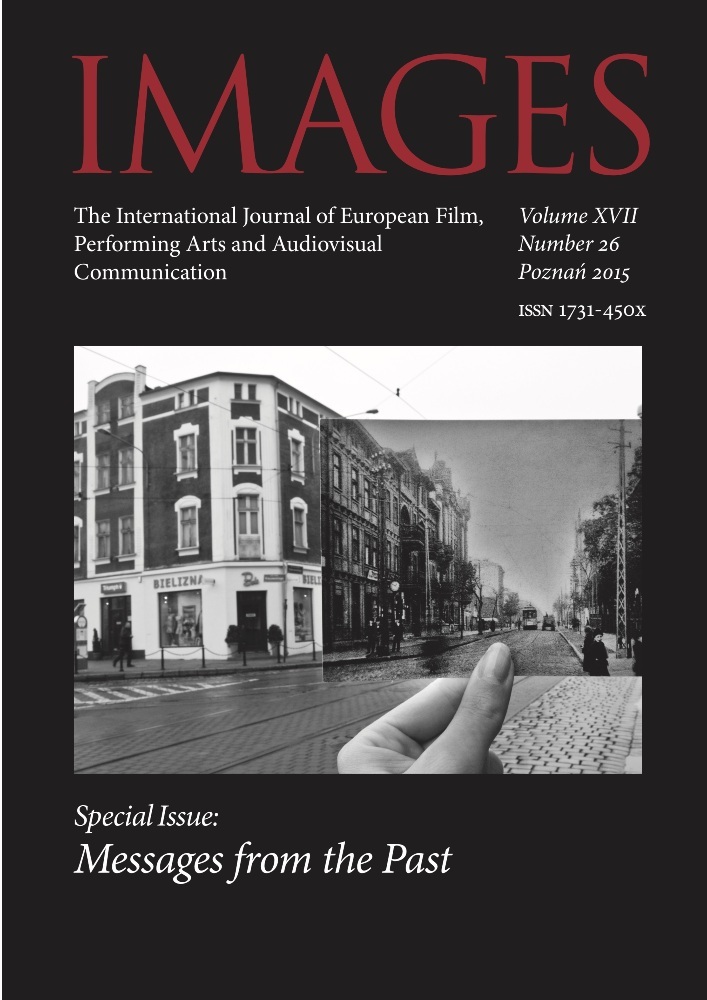Abstrakt
Scientist and Wizard. The Vicissitudes of Maestro Starewicz
The article is devoted to Władysław Starewicz (aka Ladislas Starewitch or Starevich), an animated film pioneer and independent filmmaker of Polish origin working for Russian, French and German cinematographies. The author attempts to explain why this multitalented artist and one of the most signifi cant puppet animators in film history did not achieve the commercial success he deserved, and shortly aft er WWII was almost totally forgotten. The article focuses on three aspects of Starewicz’s biography: his struggles with twentieth-century history, his fight for artistic and financial independence, and his eccentric personality. Finally, he is presented as a tragic figure who represents a model biography of an animator in Eastern Europe trying to achieve success in the Western world before 1945.
Bibliografia
S. Kolbuszewski, Kraina baśni ożyła…, „Wielkopolska Ilustracja” 1929, nr 3, s. 21.
M. Geller, W świecie baśni i ułudy, „Nowy Kurier” 1931, 6 stycznia (nr 4), s. 5.
Tad. C., Film makietowy, „Kino” 1936, nr 20, s. 10.
W. Jewsiewicki, Ezop XX wieku. Władysław Starewicz pionier filmu lalkowego i sztuki filmowej, WRiT, Warszawa 1986, s. 40.
N. Nusinowa, Wołszebnik iz Fonteniu, „Kinowiedczeskije zapiski” [online] 2001, nr 52 [dostęp: 25 stycznia 2015], www.kinozapiski.ru/ru/article/sendvalues/816/.
J. Wyszomirski, Człowiek, który ożywia lalki, „Naokoło świata” 1927, nr 44, s. 76.
(Kt), Mistrz baśni Władysław Starewicz wraca do Polski, „Ilustrowany Kurier Codzienny” 1939, nr 88.
Włodzimierz Kowańko – twórca polskiego filmu rysunkowego, „Aktualności Filmowe i Kinematograficzne” 1939, nr 5–6, s. 24.
W. Jewsiewicki, Ezop XX wieku. Władysław Starewicz pionier filmu lalkowego i sztuki filmowej, WRiT, Warszawa 1986; L.B. Martin, F. Martin, Ladislas Starewitch 1882–1965, L’Harmattan, Paris 2003, s. 183.
Ch. Ford, R. Hammond, Polish Film: A Twentieth Century History, McFarland & Co. Publishers, Jeff erson–London 2005, s. 31.
R. Giesen, R.P. Storm, Animation under the Swastika: A History of Trickfilm in Nazi Germany, 1933–1945, McFarland & Co. Publishers, Jefferson 2012, s. 38.
W. Moritz, Resistance and subversion in animated films of the Nazi era. The case of Hans Fischerkoesen, w: A Reader in Animation Studies, ed. by J. Pilling, John Libbey, Sydney 1997, s. 230.
A. Czermiński, Marionetki i film, „Czas” 1937, 19 grudnia (nr 347), s. 11.
Z. Frenkiel, U twórcy filmów marionetkowych, „Światowid” 1936, nr 15, s. 29.
R. Russett, C. Starr, Experimental Animation. An Illustrated Anthology, Da Capo Press, New York 1975, s. 92.
J. Wyszomirski, Człowiek, który ożywia lalki, „Naokoło świata” 1927, nr 44, s. 66.
D. Craft on, Emile Cohl, Caricature, and Film, Princeton University Press, Princeton 1990, s. 208.
An Equal Break, „Motion Picture News” 1925, no. 1, s. 1.
Riesenfeld Gold Medal Award, „Film Year Book” 1926, s. 779. Zob. także W. Jewsiewicki, W. Jewsiewicki, Ezop XX wieku. Władysław Starewicz pionier filmu lalkowego i sztuki filmowej, WRiT, Warszawa 1986, s. 121.
T. Żeromski, W gościnie u czarodzieja, „Ilustrowana Republika” 1929, nr 136.
Y. Tsivian, The Case of the Bioscope Beetle: Starewicz’s Answer to Genetics, „Discourse” 1995, vol. 17, no. 3.
Z.K.J., W willi wielkiego czarodzieja, „Głos Pracownika Polskiego” 1938, nr 4, s. 15.
M. Giżycki, Przed 1945: Prekursorzy i pionierzy, w: Polski film animowany, pod red. M. Giżyckiego i B. Zmudzińskiego, PWA, Warszawa 2008, s. 13.
A. Janta-Połczyński, U Władysława Starewicza, „Ilustrowany Kurier Codzienny” 1930, 8 stycznia (nr 7).
W. Starewicz, Pamiętniki (1946), „Film na Świecie” 1984, nr 307/308, s. 26.
Guide to Film-Going, „Cinema Quarterly” 1934, vol. 2, no. 3, s. 190.
A. Mc-Mahan, Th e Films of Tim Burton. Animating Live Action in Contemporary Hollywood, Continuum, New York–London 2006, s. 94.
Licencja
Copyright
© 2015 Uniwersytet im. Adama Mickiewicza w Poznaniu
OPEN ACCESS
